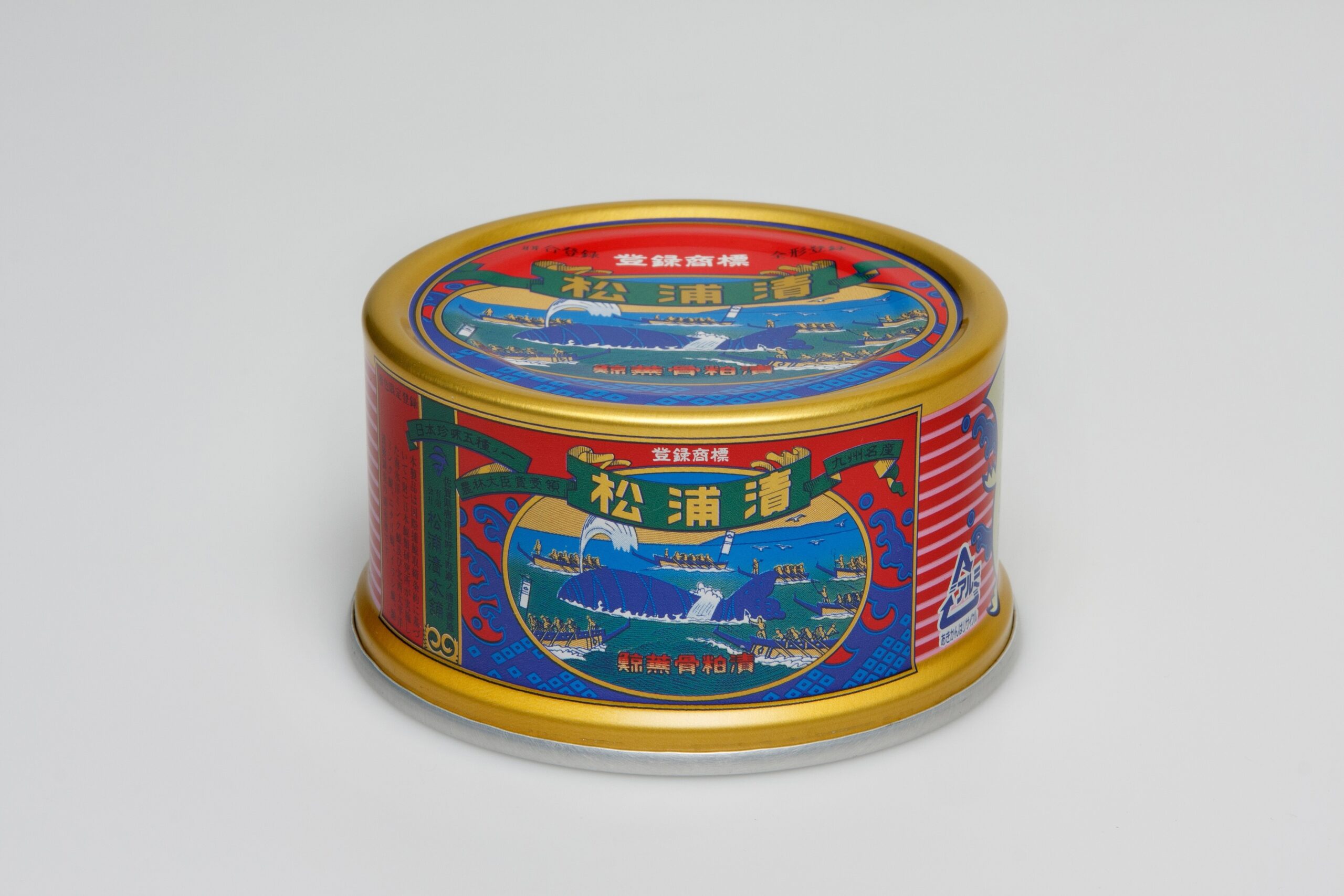捕鯨一族の執念が生んだ港の珍味
クジラの上顎部分の油抜きしてスカスカになった軟骨を酒粕漬けにした前代未聞の ローカル漬け物。キクラゲのような、プリプリ・コリコリの食感に酒粕の発酵フレーバー が染み込んで味わい深い。松浦漬けを考案した山下家は捕鯨一族の名主。江戸〜 明治に獲れていた20 〜30m 級の巨大なシロナガスクジラの上顎の部分だけでも 数十キロあったらしく、油を取った後の使いみちのない軟骨をなんとかしたい!と考案 された。かつて隆盛を誇った鯨漁文化の名残りがこの松浦漬けなんだね。
A port-born delicacy originated from the persistent efforts of a family of whale catchers
Matsuura-zuke originated as an unprecedented local pickled food made from de-oiled, empty cartilages of the whale’s upper jaw. It has tender and crunchy texture like wood ear mushroom, and is saturated with the fermented flavor of the sake lees which makes it very tasteful. The Yamashita family, who invented matsuurazuke, established its household name as a family of whale catchers. Whales that were frequently caught during the Edo and Meiji periods were gigantic blue whales that were 20 to 30 meters long. Even their upper jaws alone were said to weigh several tens of kilograms. This family wanted to make use of the empty cartilage after taking out the oil, and eventually came up with the idea to create the fermented pickles we now know as matsuurazuke. It is the cultural remnant of the once popular marine trade in Japan – whale fishing.
どう作って食べるか / HOW TO MAKE & EAT
❶クジラの上顎の軟骨を油抜き処理して刻む。
❷糖分・香辛料などで調味した酒粕に❶を漬け込む。
❸数ヶ月以上発酵・熟成させて完成。
★詳しい醸造法は門外不出のため不明
❶De-oil and cut the cartilage in the upper jaw of the whale.
❷Pickle (ferment) ❶ with sake lees seasoned with sugar and spices.
❸Complete the preparation by fermenting and aging ❷ for several months or more.
★Details of the brewing method are unknown as it has been kept a top secret to this day.
酒肴として。
地元の人はご飯のおともにも合う。
With sake
Local people eat it with rice.
▶食べられている地域 / Regions where it is eaten
佐賀県唐津一帯
Throughout Akita Around Karatsu in Saga Prefecture
▶微生物の種類 / Types of microorganisms
麹菌、酵母類
Koji-kin (Aspergillus oryzae), Yeast
